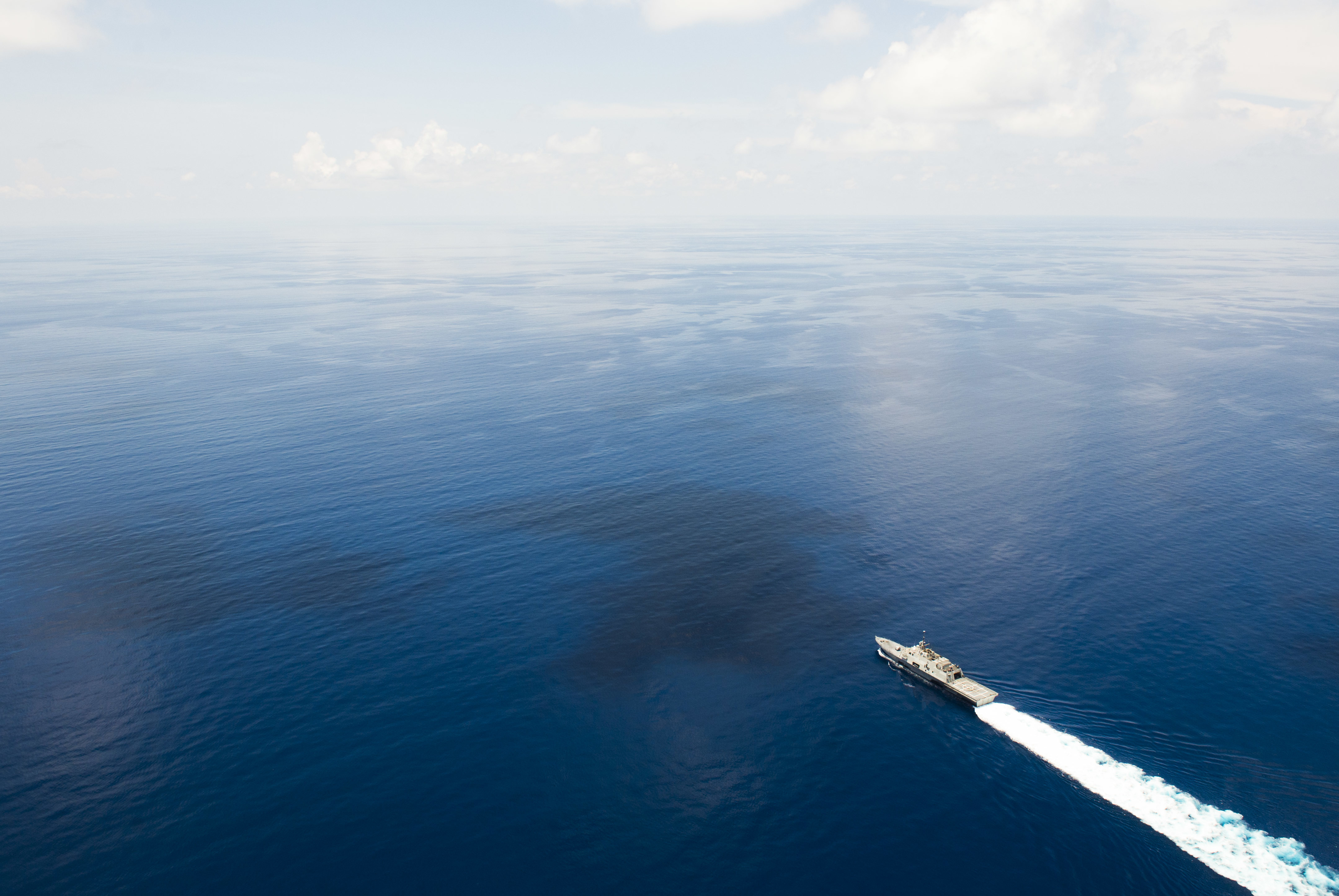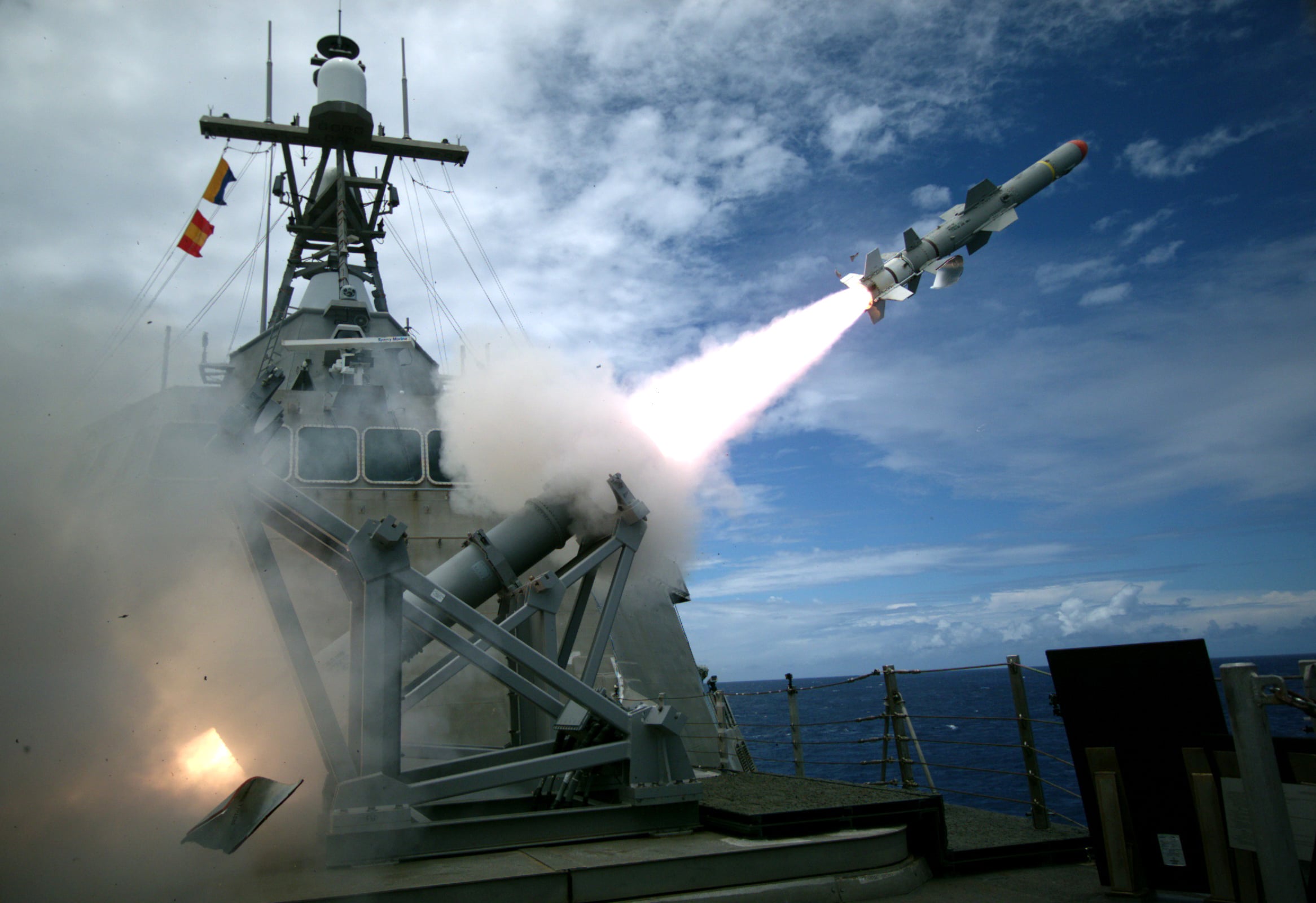
This post has been updated to include additional information on the Littoral Combat Ship costs for Fiscal Year 2018.
ARLINGTON, Va. — The Navy’s new class of 20 guided-missile frigates could cost an estimated $950 million per hull, the Naval Sea Systems Command FFG(X) program manager said on Tuesday.
Speaking at the Surface Navy Association 2018 symposium, NAVSEA’s Regan Campbell said the new class of small surface combatant would set a so-called threshold requirement for a net average cost of $950 million for the second through 20th hulls in the FFG(X) next-generation frigate program following a downselect to a single shipbuilder in 2020. The lead ship in the class is expected to cost more than the $950-million average.
In comparison, a Flight IIA Arleigh Burke-class guided-missile destroyer (DDG-51) costs about $1.8 billion to build and equip with sensors and weapon systems.
That frigate number is also above the $588-million per-hull cost of the existing Lockheed Martin Freedom-class (LCS-1) and Austal USA Independence-class (LCS-2) Littoral Combat Ships slated for the Fiscal Year 2018 budget.
The estimate emerges as the Navy is in the midst of a conceptual design review with an unknown number of bidders for the follow-on to the LCS, following a request for proposal issued late last year.
By March, NAVSEA expects to award four to six contracts to further develop the conceptual designs ahead of the final construction contract award in 2020.
“We’re going to have a technical review of each of these proposals by the end and provide them feedback in where these designs might need some buffing up to get to a full and open competition,” Campbell said.
“You will see those requests for proposals by the fourth quarter of 2019, with an award in 2020.”

While NAVSEA has not disclosed the bidders for last year’s RFP, USNI News understands up to eight or more designs are under consideration for the next phase of the program.
Those designs not only likely include the two existing LCS builders but also several European frigate designs. European shipbuilders, like Spain’s Navantia, have experience building smaller frigate-sized warships using the Lockheed Martin Aegis Combat System. Aegis shares a common DNA with the COMBATSS-21 combat system currently in use on LCS and planned for FFG(X).
“There are foreign ships that are competitors in the space and we anticipate those could be coming into play,” Campbell said.
In addition to previously disclosed requirements, NAVSEA has set the range it would like to see for the number of the Mk-41 Vertical Launch System cells – an objective target of 32 and threshold of 16. The cells could field a single Raytheon SM-2 or SM-6 per cell or four Evolved SeaSparrow Missiles quad-packed into a single cell. In comparison, a Flight IIA Burke has 96 VLS cells.
NAVSEA also will require the FFG(X) field a minimum eight over-the-horizon anti-ship missiles, with an objective requirement of 16.





